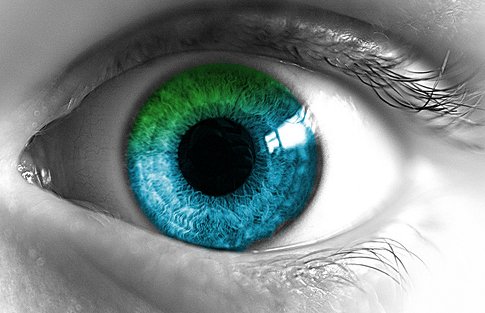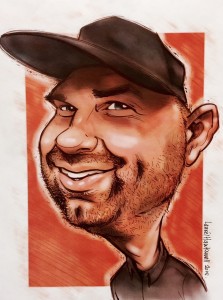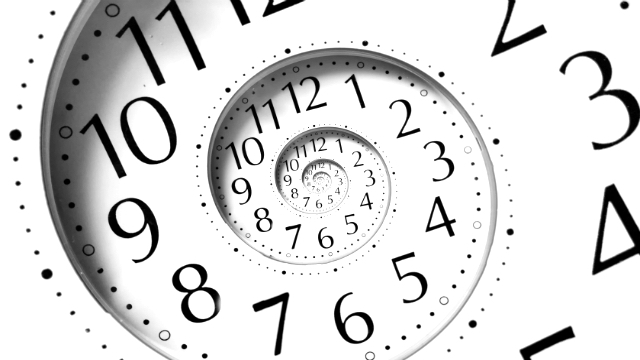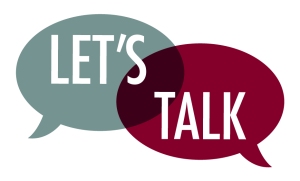
I have a confession to make. Over the years, I’ve developed the habit of over-simplifying and making snap judgments about people. I know that probably makes me sound like a superficial jerk or something, but hold up. It’s actually a beneficial skill to have as a caricature artist, and as a human.
First Impressions
I recently read that it only takes about 3 seconds to form an opinion about someone, and once that opinion is formed, it’s nearly impossible to completely undo. (No pressure, right?) When I read that, I realized that it’s not just caricature artists who are constantly judging people based on their looks. We all do it. (Yes, that means even you, superficial jerk) Can you please stop judging me now?
But why do we do it? The simplest answer is: We are hardwired as a species to think that way. It’s just how it is, so you can finally stop feeling bad about having an awesome skill that’s necessary for your survival. There. Feel better now? Good.
As a side note: I’m not a psychologist or a scientist, I just play them both on TV. (Are you impressed yet?)
Now aside from the survival benefits associated with being able to make accurate quick judgments about people, it also helps out tremendously as a caricature artist and with practice, we can actually get better at it.
When I have a person sitting in front of me, and I only have a handful of minutes to draw their face, you think I’m not judging them? You bet your sweet face I am.
I have to be able to translate what I’m seeing into a few quick lines that capture their face on paper, and do it as quickly (and uniquely) as possible. It’s a skill that takes years and years of practice to get good at so be nice. (I’m still practicing)
Tip: One way to improve your likeness is by taking pictures of people holding their caricatures. This will allow you to be able to go back and compare your drawing to their face later. Find out what worked and what you could improve on. Look for patterns in your drawing that might be holding you back. Challenge yourself to do a little better each time. Remember that progress is sometimes slow, so keep trying.
Let’s get real
Some faces are just easier to caricature than others (for obvious reasons) but it’s still extremely difficult to nail the likeness of every person you draw no matter how experienced you are.
So why is that? Well there are probably a hundred different reasons, but in my experience it comes down to these major factors:
- Fear of rejection from an unhappy customer
- Playing it safe and not taking risks
- Relying on muscle memory and general artistic laziness
- Time constraints of the job
As a caricature artists who has worked in a live-setting for over 10 years, I can tell you that typically I find myself under a lot of pressure from both internal and external forces. Keeping the general public (and myself) happy and entertained can sometimes be a tough gig.
Think about it
There aren’t very many people in the world who actually want to be made fun, yet most people are at least mildly curious to see what their caricature looks like.
That doesn’t make much sense, right? If you think about it, don’t those two things seem diametrically opposed to each another? If you answered yes, you are right. Welcome to the great dilemma of the caricature artist.
I gave up a long time ago worrying about what other artists thought of me. I decided instead to always err on the side of flattery in my drawings and it has served me pretty well. Does that make me a sell-out? Probably. Are my customers happy? Usually. Are my caricatures generic cookie-cutters? Not at all, and here’s why: I always try to customize each drawing and capture the essence of that person. So what’s wrong with doing that in a flattering way? Photographer’s do it all the time with their art, so why can’t a caricature artist?
For me, a happy customer is what’s most important. After all, they are supporting me as an artist by paying me to create artwork because they like my style. I appreciate that so much and I try to give them something we can both be happy with. Ultimately, I always want it to look like them. This means I need to know how to choose the best angles and pick the right details to accentuate. It also means I should be customizing my approach slightly for each face I’m drawing and not let myself get lazy. I don’t always succeed, but I’m always trying.
See what I’m saying
I read a quote recently that said “What we see depends mainly on what we look for“. I’ve been thinking about that all day and I love it.
I do believe we can control what we see in others, and we can also choose to process that information any way we want with enough practice. Look for the good in others and you will see more good in yourself.



